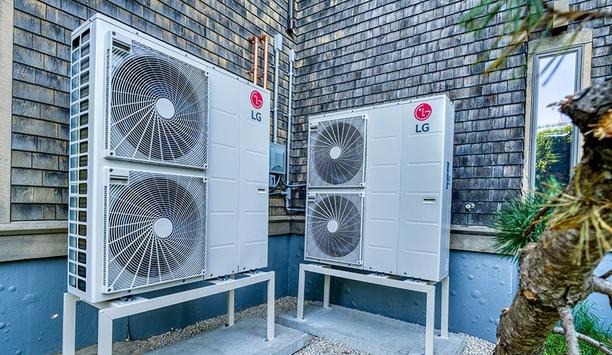All supply and return air ducts at AHU room crossings, firewall crossings, and all floor crossings shall be provided with a fire damper (manual/motorized) of at least equal to the fire rating of the wall or floor on which it is installed as per UL555/UL555S 1995 tested by CBRI.
If motorized fire dampers are of a multi-leaf type and provided with a spring return electrical actuator, it has its own thermal trip for ambient air temperature outside the duct and air temperature inside the duct. Fire damper blades and outer frames shall be of 16G galvanized steel construction fitted with 16 gauge extended sleeves on both sides.
AMCA seal for air performance
Each fire/smoke damper shall be AMCA licensed and bear the AMCA seal for air performance
Each fire/smoke damper shall be AMCA licensed and bear the AMCA seal for air performance. Damper blades shall be airfoil shaped (equivalent to 2.3 mm thickness strength) roll formed using a 0.8 mm thick single piece of galvanized sheet.
Pressure drop shall not exceed 7.5 Pa when tested at 300 m/min face velocity on a 600 x 600 mm size damper. The electric actuator shall be energized either upon receiving a signal from the smoke detector installed in the AHU room supply air duct/return air duct or temperature sensor.
Recommended Change
All supply and return air ducts at AHU room crossings, firewall crossings, and at all floor crossings shall be provided with a motorized fire & Smoke damper of at least equal to the fire rating of the wall or floor on which it is installed, tested as per UL555 and leakage rating as per UL555S, tested & certified by UL.
Motorized Fire & Smoke Damper: These shall be of a multi-leaf type and provided with a UL-listed spring return electrical actuator. Each fire damper shall be provided with a resettable thermal release, which permits controlled closure of the damper at 74°C air temp inside the duct.
Fire & smoke damper blades and frames shall be of 16G, with a minimum 180 GSM galvanized steel construction, fitted with 20 gauge extended sleeves on both sides.
UL Damper Certification
Pressure drop shall not exceed 20 Pa when tested at 300 m/min face velocity on a 600 x 600 mm size damper
The damper manufacturer must provide third-party tested data for air performance. Damper blades shall be airfoil shaped (equivalent to 2.3 mm thickness strength) roll formed using 0.8 mm thick single piece of galvanized sheet or triple V type accurately formed using 16 Gauge Steel.
Pressure drop shall not exceed 20 Pa when tested at 300 m/min face velocity on a 600 x 600 mm size damper. The electric actuator shall be de-energized either upon receiving a signal from the smoke detector installed in the AHU room supply air duct/return air duct or temperature sensor.
The damper must be supplied in accordance with the maximum module and maximum assembly size mentioned in the UL certification of the manufacturer. The actuator sizing and models must be in strict compliance with the manufacturer’s UL Damper Certification.
Reasoning
Fire & smoke dampers FSD cannot be manually operated; they need an actuating mechanism to close/open the damper in the event of fire. The fire dampers tested by CBRI are tested only for limited tests as per UL-555, such as the fire endurance test & Hose Steam Hose test.
The fire dampers tested by CBRI do not cover the smoke & leakage tests, which are part of UL-555S. These are life-safety products, so the specs need to be stringent. There are many manufacturers in India offering UL certified FSD.
UL Listed Actuator
AMCA testing is more related to Pressure drop data and is limited to just 1-2 Manufacturers
The temperature-sensing device is not part of the UL Listed Actuator. The UL-listed fire dampers should be constructed out of a minimum 180 GSM Galvanized Steel Sheet (for corrosion resistance), and the sleeve need not be 16 gauge. Even 20G gives enough stability.
These are life safety products, wherein UL Certification is most vital. AMCA testing is more related to pressure drop data and is limited to just 1-2 manufacturers. Test reports from other Third Party Inspection Agencies should also be accepted.
UL-certified dampers needn’t be airfoil blades. The highest class 1 leakage and the fire endurance test can be achieved with triple V-type blades, which are far more cost-efficient.
Fire & Smoke Leakage certification
Pressure drops of triple V type blades are slightly higher than the airfoil blades. Once again, these are life safety products used for emergency purposes, so more importance is given to Fire & Smoke Leakage certification.
In normal conditions, the damper actuator receives constant power; however, in a fire condition, the actuator is de-energized so that the damper blades go into fail-safe fire condition since the actuators are spring return type.
The UL Certification of the damper clearly mentions the minimum and maximum sizes that can be supplied. It also prescribes the actuator model to be used for various module sizes. The life safety damper supplies must be in accordance with these restrictions.
















